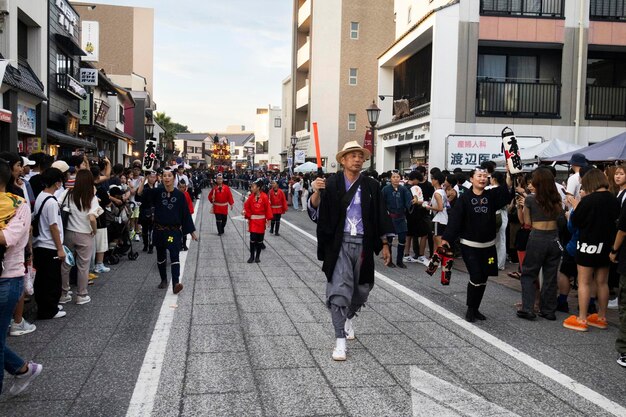Japanese Shopping Etiquette: A US Traveler’s Guide

Japanese shopping etiquette can be a minefield for US travelers; understanding customs like gift-giving, handling money, and appropriate language ensures a smoother, more respectful, and ultimately more rewarding shopping experience.
Navigating the bustling streets and unique shops of Japan is an exciting experience for any US traveler. However, the key to truly enjoying your shopping lies in understanding and respecting local customs. This guide to Japanese shopping etiquette: A US traveler’s guide to avoiding cultural faux pas and getting better service will help you navigate those potentially tricky situations, turning your shopping trips into delightful cultural exchanges.
Understanding Basic Japanese Shopping Customs
Before you even enter a store, understanding the fundamentals of Japanese culture is crucial. Respect, cleanliness, and indirect communication are cornerstones that influence how business is conducted. By adopting these principles, you’ll be well on your way to a positive shopping experience.
In Japan, the customer is truly king (or queen!). This translates to exceptional service and attention to detail, but it also comes with its own set of expectations. By understanding and respecting these expectations, you can easily avoid cultural faux pas.
The Importance of Respect
Showing respect is paramount. This includes bowing slightly when entering a store, especially if greeted by a staff member. It also means being mindful of your volume and avoiding loud or boisterous behavior.
Cleanliness and Presentation
Japanese culture places a high value on cleanliness. Avoid eating or drinking while browsing. Be careful not to touch items unnecessarily. A clean and tidy appearance is appreciated.
- Bowing as a sign of respect.
- Maintaining a quiet and respectful demeanor.
- Avoiding eating and drinking in stores.
- Being mindful of cleanliness and presentation.
Understanding these foundational principles sets the stage for navigating more specific shopping customs with grace and confidence. These small gestures can greatly enhance your interactions and ensure you are welcomed with warmth and respect.
Entering and Exiting Shops: Greetings and Goodbyes
The way you enter and exit a shop in Japan can significantly impact the impression you make. Knowing the right greetings and farewells can make all the difference in establishing a positive rapport with the staff.
Entering and exiting a shop isn’t just about walking through the door. It’s an opportunity to show respect and acknowledge the effort of the staff in serving you. A little acknowledgment goes a long way.

Okaimono Desu Ka?
When entering a shop, you’ll often be greeted with “Irasshaimase!” (いらっしゃいませ!), which roughly translates to “Welcome!”. A simple nod or slight bow in response is sufficient. You don’t necessarily need to verbally reply unless you need immediate assistance.
Saying Goodbye
When leaving, a simple “Arigato gozaimasu” (ありがとうございます) – “Thank you very much” – is appropriate. A slight bow as you say it further demonstrates your appreciation. If the staff says something as you leave, a nod is enough acknowledgment.
- Responding to “Irasshaimase!” with a nod or bow.
- Saying “Arigato gozaimasu” when leaving.
- Returning a bow when appropriate.
By observing these simple greetings and farewells, you demonstrate your understanding and respect for Japanese customs, making for a smoother and more pleasant shopping experience. It’s these small gestures that often have the biggest impact.
Handling Money and Making Payments
The way money is handled in Japan differs significantly from the US. From using trays for payment to avoiding direct contact, being aware of these nuances is key to avoiding embarrassment and showing respect.
Handling money in Japan is more than just a transaction; it’s a gesture of respect. Observe the specific customs to show that you appreciate their care and service.
Using a Money Tray (Kotori)
In most shops, you’ll notice a small tray (called a “kotori”) near the register. Place your money on the tray rather than handing it directly to the cashier. This is considered more hygienic and respectful. The cashier will also place your change on the tray.
Accepting Change
When receiving change, take it from the tray with both hands if possible. This shows extra politeness. Count your change to ensure accuracy, but do so discreetly and without making a show of it.
- Always use the money tray.
- Avoid direct hand-to-hand exchange of money.
- Receive change with both hands if possible.
- Count change discreetly.
By following these guidelines when handling money, you will demonstrate your familiarity and respect for Japanese customs, contributing to a smoother and more respectful transaction.
Gift-Giving Etiquette in Japanese Shops
While not always applicable, gift-giving is an integral part of Japanese culture. If you’re buying a gift for someone, or if you’re presented with a gift from the shop, understanding the associated etiquette is essential.
Receiving or giving gifts can be a significant part of Japanese shopping culture. Being aware of the proper etiquette helps you navigate these interactions with grace and consideration.
Omotenashi (Hospitality)
Omotenashi, meaning wholehearted hospitality, is central to customer service in Japan. It’s not uncommon to receive small gifts or samples with your purchase. Accept these gifts with gratitude, saying “Arigato gozaimasu.”
Wrapping and Presentation
If you’re purchasing a gift for someone, consider having it wrapped. Japanese stores take pride in their gift-wrapping services, often using beautiful papers and ribbons. This adds an extra layer of thoughtfulness to your gesture.

- Accept small gifts with gratitude.
- Consider having gifts professionally wrapped.
- Present and receive gifts with both hands.
Understanding gift-giving etiquette demonstrates your cultural sensitivity and enhances the overall shopping experience. It’s a way to show appreciation and build positive relationships.
Communicating with Shop Staff: Language and Gestures
While English is becoming more common in tourist areas, knowing a few basic Japanese phrases and understanding appropriate gestures can significantly improve your interactions with shop staff.
Communicating effectively enhances any interaction. Knowing a few phrases and gestures can bridge the language gap and display your respect for Japanese culture.
Basic Phrases
Learning a few basic phrases such as “Sumimasen” (excuse me), “Kore wa ikura desu ka?” (how much is this?), and “Arigato gozaimasu” (thank you very much) can be incredibly helpful. Even attempting to speak Japanese will be appreciated.
Gestures and Body Language
Avoid excessive gesturing and maintain a respectful posture. Pointing directly at items or people can be considered rude. Instead, use an open hand gesture to indicate what you’re interested in. Maintain eye contact, but avoid staring.
- Learn basic Japanese phrases.
- Use respectful gestures and body language.
- Avoid excessive gesturing and pointing.
By utilizing these communication tips, you will show respect for the local culture and make it easier to communicate your needs and appreciate the service provided. This enhances your experience and showcases your willingness to engage with Japanese customs.
Navigating Different Types of Shops in Japan
Japan offers a diverse range of shopping experiences, from department stores to small, family-run shops. Each type of store may have its own unique etiquette, so it’s essential to be aware of the differences.
Understanding the nuances of different shops enhances your ability to navigate them respectfully. Awareness of unique etiquette ensures smoother and more rewarding shopping experiences.
Department Stores (Depato)
Department stores are known for their exceptional service and wide selection of goods. Follow the general etiquette guidelines, and be prepared for a more formal shopping experience.
Convenience Stores (Konbini)
Convenience stores are ubiquitous in Japan and offer a variety of goods and services. While the etiquette is less formal than in department stores, maintaining a respectful demeanor is still important.
Small, Family-Run Shops
These shops often have the most unique and authentic products. Engage with the shop owners, ask questions, and show genuine interest in their craft. This can lead to a more personalized and rewarding shopping experience.
- Adapt your etiquette to the type of store.
- Show genuine interest in small, family-run shops.
- Be prepared for more formal service in department stores.
By adapting your behavior to suit each store type, you showcase your understanding of local customs, fostering positive interactions and optimizing your shopping adventures.
| Key Point | Brief Description |
|---|---|
| 👋 Greetings | Nod/bow upon entering; say “Arigato” when leaving. |
| 💰 Payment | Use the money tray for all transactions. |
| 🎁 Gifts | Accept with gratitude; consider gift wrapping. |
| 🗣️ Communication | Learn basic phrases; avoid excessive gesturing. |
Frequently Asked Questions
▼
No, tipping is generally not expected and can even be considered rude in Japan. Exceptional service is part of the culture, so there’s no need to tip.
▼
Inform the shop staff immediately and apologize. Depending on the item, you may be expected to offer to pay for it. Be polite and follow the staff’s instructions.
▼
Some stores provide a face cover to protect clothing from makeup. Always ask for assistance and use the provided facilities. Handle clothing with care and respect.
▼
Start with “Sumimasen” (excuse me) and try using simple English. Many stores have staff who can assist English-speaking customers, particularly in tourist areas.
▼
Bargaining is generally not customary in most Japanese shops, especially in department stores or established businesses. However, it might be acceptable in flea markets or smaller shops, but always do so respectfully.
Conclusion
By familiarizing yourself with these aspects of Japanese shopping etiquette: A US traveler’s guide to avoiding cultural faux pas and getting better service, you will not only avoid potential missteps but also enhance your interactions, making your shopping trips in Japan more rewarding and enjoyable. Embrace these customs and immerse yourself in the rich cultural tapestry of Japanese shopping.





